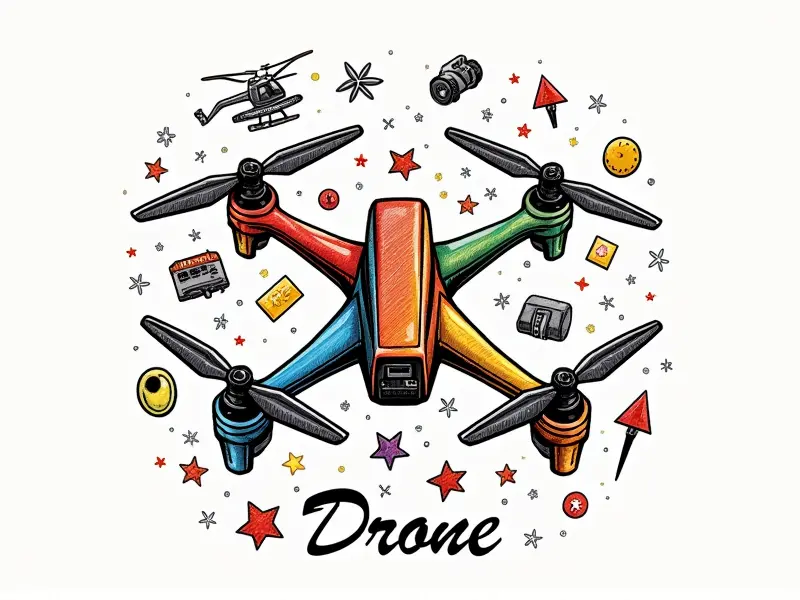4S vs 6S drones comparison?

4S vs 6S Drones: A Comprehensive Guide to Choosing the Right Option
Drones have become an essential tool for hobbyists, professionals, and enthusiasts alike. When it comes to choosing between a 4S and a 6S drone setup, understanding the nuances of each configuration is crucial. This article delves into the key differences in power, performance, cost, battery life, weight considerations, and more, helping you make an informed decision.
FPV Racing: Why 6S Beats 4S Drones
First-person view (FPV) racing is a thrilling experience that demands high-speed maneuverability and robust performance. A 6S drone setup offers several advantages over a 4S configuration:
- Better Power Output: The higher voltage of a 6S battery provides more power to the motors, enabling faster acceleration and top speeds.
- Enhanced Control: With better motor control, you can achieve tighter turns and sharper maneuvers, crucial for competitive racing.
- Battery Efficiency: Despite higher voltage, 6S batteries are often more efficient in delivering sustained power over longer periods.
Power and Performance: 4S vs 6S Drones
The choice between a 4S and a 6S drone setup significantly impacts the overall performance:
- Motor Power: A 6S battery provides more voltage, resulting in higher motor RPMs and better thrust.
- Battery Capacity: While both setups have their pros and cons, a 4S setup typically offers a balance between performance and longevity.
Cost vs Capability: Choosing Between 4S & 6S
The decision to go with a 4S or 6S drone also hinges on budget considerations:
- Initial Cost: A 4S setup is generally less expensive, making it an attractive option for beginners.
- Maintenance and Upgrades: The higher cost of a 6S system may be justified by its superior performance and durability over time.
Dive into Drone Tech: 4S vs 6S Battle
The technical aspects of these setups are crucial for understanding their differences:
- Battery Chemistry: Lithium-polymer (LiPo) batteries come in different S configurations, each with unique characteristics.
- Motor Compatibility: Ensure your motors can handle the higher voltage of a 6S setup to avoid damaging components.
Battery Life Comparison: 4S vs 6S Drones
The battery life is a critical factor in choosing between these setups:
- Flight Duration: A 4S drone typically offers longer flight times due to lower voltage and higher capacity.
- Cycles and Lifespan: The number of charge cycles affects battery longevity, with 6S batteries often lasting fewer cycles but delivering more power per cycle.
Pros and Cons of 4S & 6S Batteries
Evaluating the strengths and weaknesses of each setup helps in making an informed choice:
- Advantages of 4S Batteries: Longer flight times, lower cost, better durability.
- Disadvantages of 4S Batteries: Lower power output, less suitable for high-performance applications like FPV racing.
Weight Considerations in 4S vs 6S Drones
The weight distribution and overall mass of the drone impact its flight characteristics:
- Battery Weight: A 6S battery is heavier, which can affect lift capabilities but also provides more power.
- Frame Design: Optimizing your frame for weight distribution is essential to balance performance and efficiency.
Choosing Between 4S and 6S for FPV Racing
For those serious about FPV racing, the choice becomes clear:
- Prioritize Speed and Control: A 6S setup is ideal for achieving higher speeds and better control in competitive races.
- Battery Management: Efficient battery management systems are crucial to maximize performance during intense racing sessions.
Understanding Voltage Differences: 4S to 6S
The transition from a 4S to a 6S setup involves significant changes in voltage and power delivery:
- Voltage Increase: Moving from 14.8V (4S) to 22.2V (6S) requires compatible motors and ESCs.
- Battery Compatibility: Ensure all components are rated for the higher voltage to avoid damage or malfunction.
Flight Duration: Comparing 4S and 6S
The flight duration is a critical factor in choosing between these setups:
- Average Flight Time: A typical 4S drone can fly for around 15-20 minutes, while a 6S drone might last 8-12 minutes.
- Battery Capacity: Higher capacity batteries in 4S setups offer extended flight times but may sacrifice performance.
Battery Capacity Impact on Drone Performance
The battery's capacity directly influences the drone’s overall performance and efficiency:
- Higher Capacity Batteries: Provide more energy for sustained flights, ideal for aerial photography or videography.
- Battery Efficiency: Optimal battery management ensures that you get the most out of your drone's power source.
Conclusion
The choice between a 4S and a 6S drone setup depends on your specific needs, whether it’s FPV racing or general use. Understanding the pros and cons of each configuration helps you make an informed decision that maximizes performance while staying within budget constraints.

